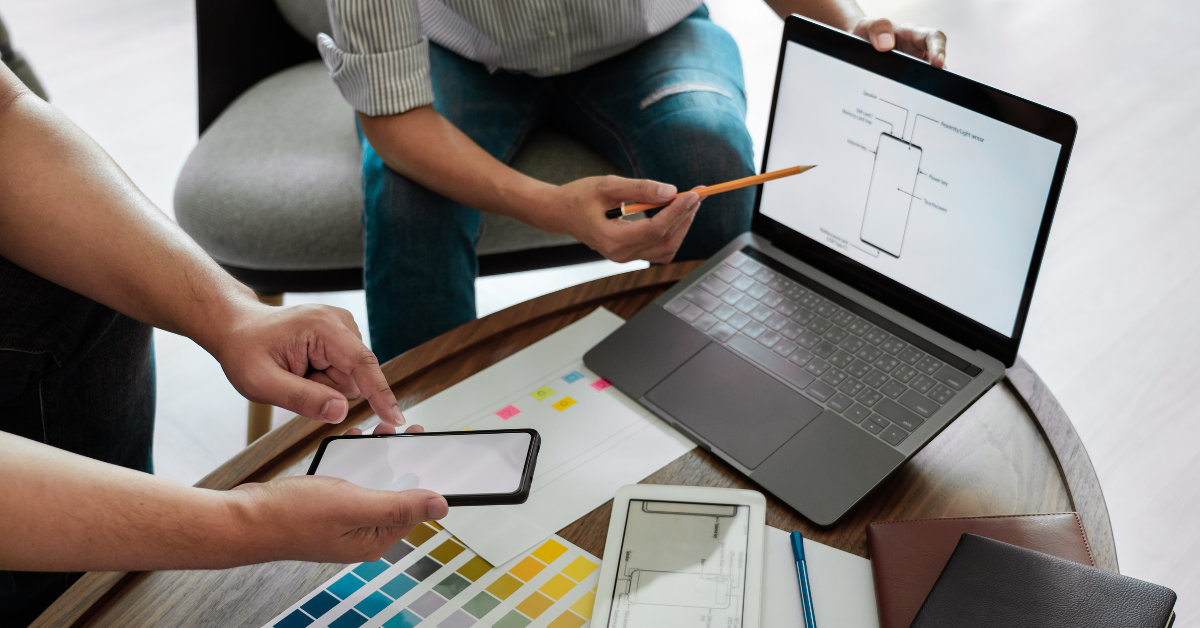
The world of product is ever-changing, and product designers have (arguably) been given limitless tools to achieve incredible results. To work in product, you have to be a natural innovator whilst also having a curiosity about what customers truly want.
“Over time, [product] has also evolved as an artistic expression generating unique objects that have brought the character into our daily lives. It has become a competitive field with designers thinking out of the box to create an ideal world with numerous possibilities.” - [Source]
How has product design evolved?
For some, product design may sound like a fairly new discipline, when in reality, product design goes back decades. Think about all the products that you know and love from “household” brands: Coca-Cola, Microsoft, Apple, Twining's - the list goes on.
All of these brands would have had a dedicated product design team within them, from the people who designed the first logos through to the ergonomics and aesthetics of the product. If we look back at even 30 years ago, product as a professional career path would have looked entirely different in comparison to what it looks like now.
“During that time [the industrial revolution], there wasn’t much importance given to user-centric design as of now. With its newness, discoveries were made to simplify labour, the spinning jenny was groundbreaking in the weaving industry marking the start of mass production in clothing.” - [Source]
Product in its infancy was, in some ways, very two-dimensional. Technology has seen product evolve into a profession and a function that is interlinked with other departments and facets of an organisation: sales, user experience, marketing, and brand are all seen as key branches within the product tree.
Modern methodologies: how do we look at product now?
Product encompasses so many different elements, which has enabled organisations to now centralise product and ensure that it’s threaded into the fibre of their teams. This isn’t to suggest that product wasn't connected before. However, the way organisations used to run before technology was introduced arguably did have a more disjointed approach. Sales teams are purely focused on sales.
Marketing teams are purely focused on marketing. Product teams purely focused on product, and technology teams… didn’t actually exist. Now, product can encompass designers, writers, salespeople, developers, artists, videographers, and so much more.
“The introduction of Neo modern designs lead to aesthetic appeal taking a higher value. After centuries of rigid functionality taking priority, designers started applying creative freedom in their designs. The modernist design ideology values creative artistic expression and this led to celebrity designers taking a leap in their careers with extravagant designs. Art and design started merging, showing us that art itself is the work of a designer. ” - [Source]
Sustainability and accessibility are also factors that wouldn’t have traditionally been considered before. Before the birth of the internet, accessibility such as accounting for colour blindness or providing closed captions for advertising a product simply weren’t available.
Now, sustainability and how “green” a product is can be a deciding factor for whether a customer chooses to purchase or not. Additionally, accessibility can impact whether someone within your target market can physically access your product or not.
“Anything that a product needs in order for more users to benefit from the totality or majority of its features, will fall under the category of product accessibility. This includes the means by which a business owner attracts customers and makes their product available, i.e. your website, shopfront, and marketing techniques. Making all of these channels accessible means broadening your reach and maximizing your potential as a business.” - Qonto
Because technology has enabled individuals to create whole businesses and product lines from home, the competition has evolved, thus, the need to stand out from the crowd has grown even more. Product (and having a strong product function) could be the deciding factor on whether your business swims or sinks.
Product: What does the future look like?
No one knows about what the future could look like, but we’re sure that AI is going to play a part in things. Not only has AI allowed for acceleration within product design teams when looking at speed and agility, but it has also given designers and product professionals additional bandwidth for creativity.
“The integration of AI into product management is just the beginning. The future holds immense potential for AI-driven features that can transform how we understand customers and design products. Enhanced AI-driven insights modules can collate data from various sources, uncover trends, and identify market opportunities.” - [source]
The future of Product design could actually be further from reality than we realise. Will virtual reality take the reigns? Will the humble 3D printer evolve into something more? The future sounds exciting and bright for product, and we’re excited to see what businesses and ideas emerge in the coming years.
The bottom line is that businesses need to adapt to the times and look at how their product teams are currently functioning as well as the skill sets within them. Only the most equipped and forward-thinking teams will be able to keep up with technology and its innovations.



